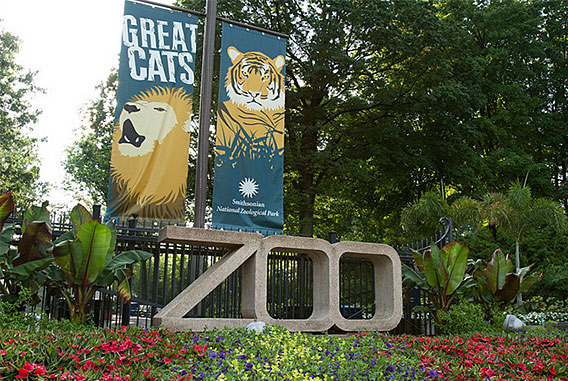Study of Diversity among Species Helps National Zoo Scientists Breed Endangered Species
Understanding how to save an animal species from extinction may depend, in part, on understanding the many unique processes that lead to birth. That is why researchers at the Smithsonian’s National Zoo are looking beyond the lab rat to learn about how other animals reproduce—and urging the rest of the scientific community to do the same.
“Fundamental knowledge about the different ways animals reproduce has practical applications for conservation, yet when you search through the scientific literature, almost everything is focused on rodents,” said David Wildt, head of the National Zoo’s Center for Species Survival, part of the Smithsonian Conservation Biology Institute. “We want to remind folks that it’s important to expand this research to other animals so we can effectively create healthy, viable security populations, which may be used to reinvigorate wild populations.”
National Zoo scientists made this recommendation in a paper recently published in the scientific journal Molecular Reproduction & Development and highlighted some of the unique reproductive traits among the planet’s more than 55,000 vertebrate and 1.1 million invertebrate species. The article is available online now and will appear in the May issue of the journal.
The paper’s authors looked at 10 prominent scientific journals related to reproduction science over the past decade to survey how many articles were about animals that were not already the main focus of other studies. They found that only 10 percent of the more than 12,000 studies were based on a nontraditional species and that 36 percent of the published papers were about mice and cattle.
“We don’t believe these should be the world’s role models for how animals reproduce,” said Wildt, leading author of the paper. “The public tends to believe that sexual reproduction is the same whether it occurs in people, cheetahs or giant pandas. Even professionals in this field seem to forget about the wonderful diversity among species.”
Giant pandas, for example, only have between 24 and 72 hours a year in which they can get pregnant. Whiptail lizards reproduce asexually, without fertilization from a male. Unlike most other mammals, the platypus lays eggs.
The National Zoo has become a leader in studying the inherent differences in how animals reproduce and using that knowledge to successfully breed a wide range of threatened or endangered species, including the cheetah, giant panda, Przewalski’s horse, clouded leopard and white-naped crane. In some species, such as the black-footed ferret, these types of intensive studies have led to introducing a species back into the wild using captive-bred animals. And as frogs worldwide die from a disease known as amphibian chytrid fungus, scientists can use information about how various species of frogs reproduce to develop security populations that are protected from the disease.
But Wildt and the paper’s co-authors stress that the academic community should take a more proactive approach, looking beyond laboratory rodents and livestock to collect data on various species—and to do so before they become too rare to study or save.
Studying nontraditional species also has practical applications for developments in human reproductive health, said Dr. Pierre Comizzoli, paper co-author and reproductive physiologist at the National Zoo. For example, researchers have already gained insights into menopause while studying little brown bats and are learning about reproduction in aging populations and contraception from other animals.
“Cheetahs produce many malformed spermatozoa, a common finding in men, and some species of birds and bats have the ability to naturally store sperm for months, perhaps offering new insights for overcoming certain human infertility conditions,” Comizzoli said. “The more diversity we explore, the better we are able to address complicated issues that we encounter in humans. We consider our science to be a new interface between animal science and human health.”
Authors of the paper from the National Zoo are David Wildt, Pierre Comizzoli, Budhan Pukazhenthi and Nucharin Songsasen.
# # #
SI-83-2010

